- TOP
- Twelve Chinese Poems
Overview
Twelve Chinese Poems
- Museum No.
- BK547
Showing 1-6 of 6
| Title | Twelve Chinese Poems |
|---|---|
| Designation | |
| Artist | |
| Category | Calligraphy(B), Japanese Calligraphy, Japanese Calligraphy |
| Country | Japan |
| Period | Edo |
| Century | 18th |
| Year | |
| Quantity | |
| Materials | |
| Dimensions | |
| Inscription by | |
| Signature/Seals Etc | |
| Donor |
This object may be one within a set or the title of a set. To see all objects in the set, perform a Category Search by the Museum Number below, entering numerals only before the hyphen.

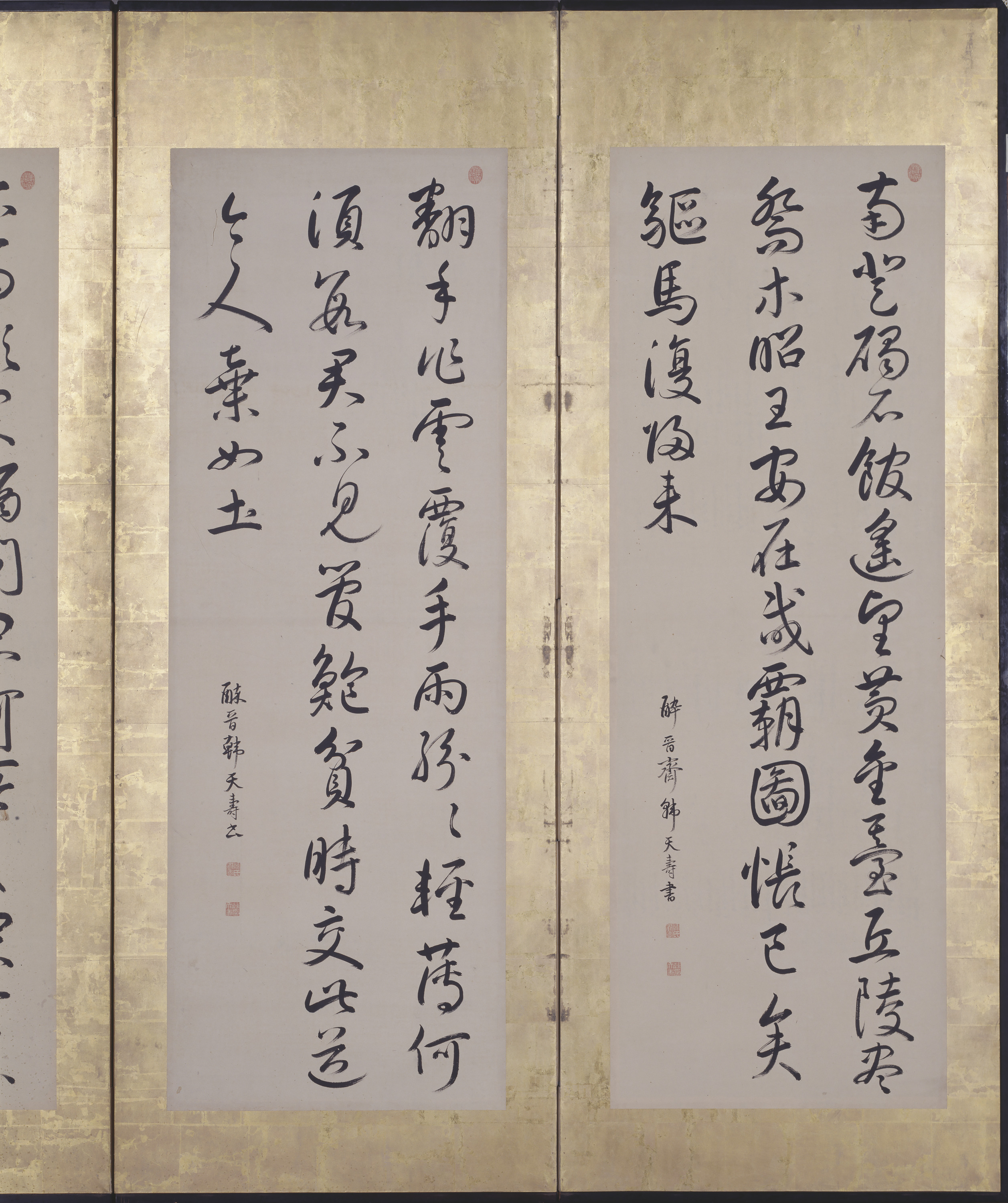







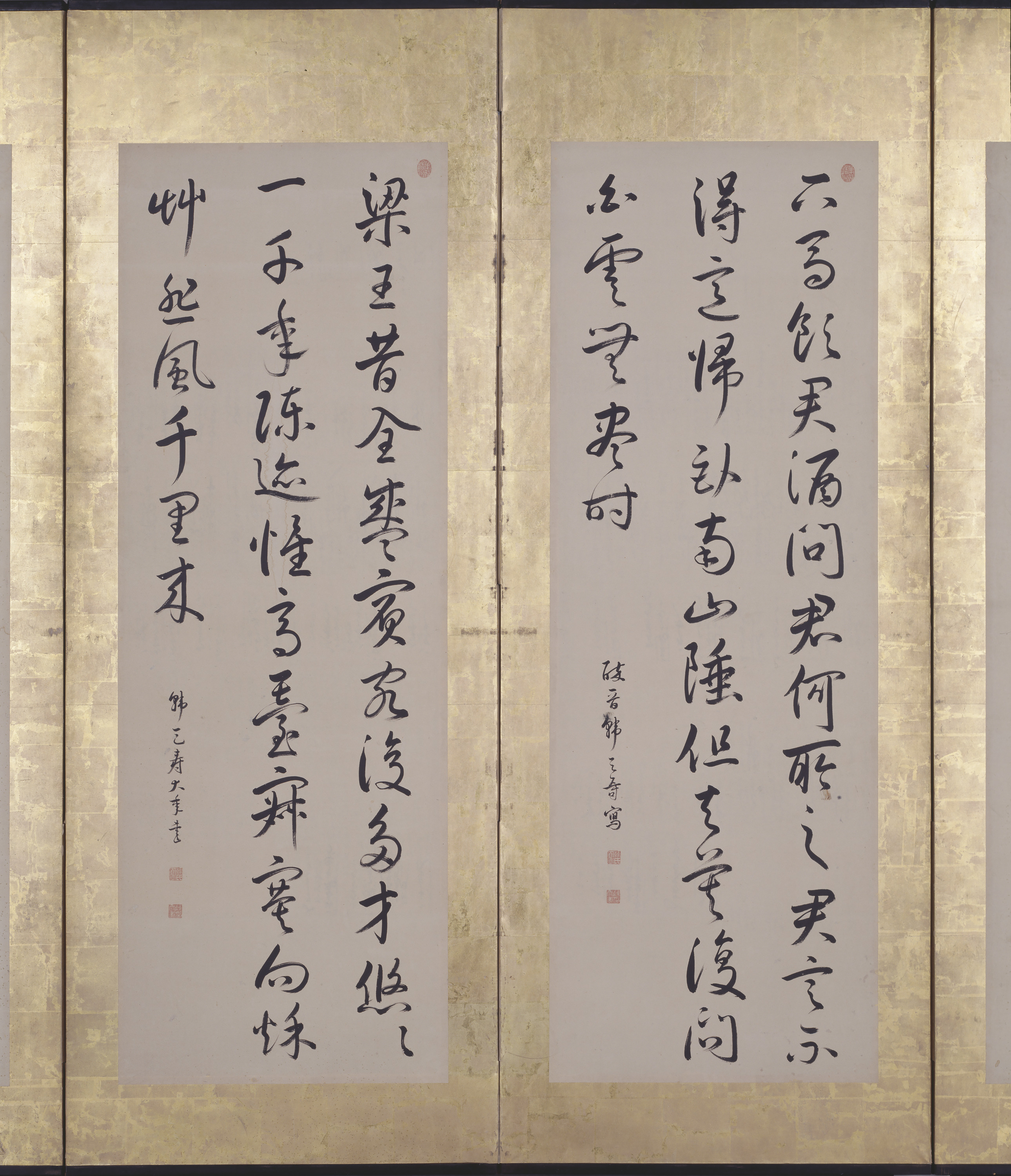
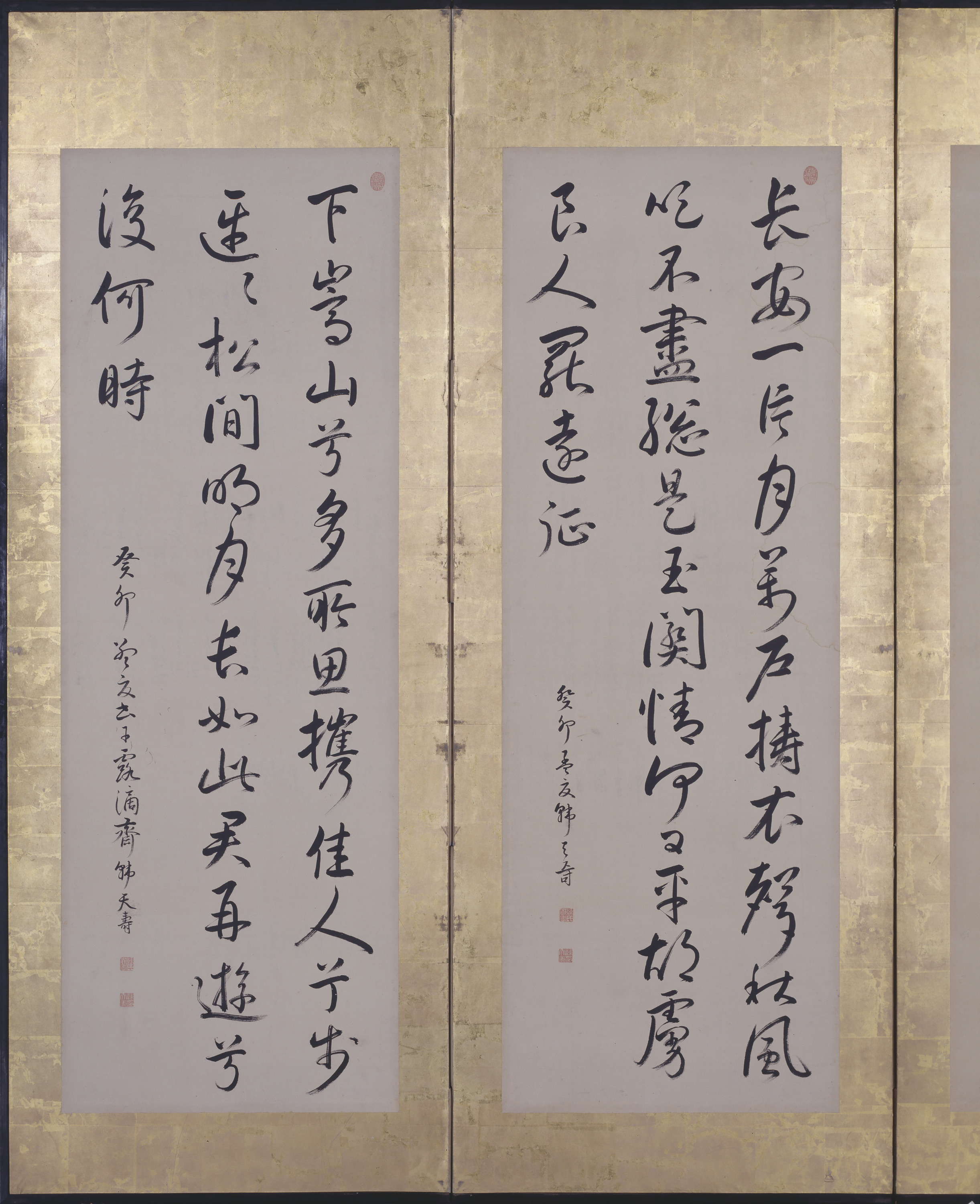
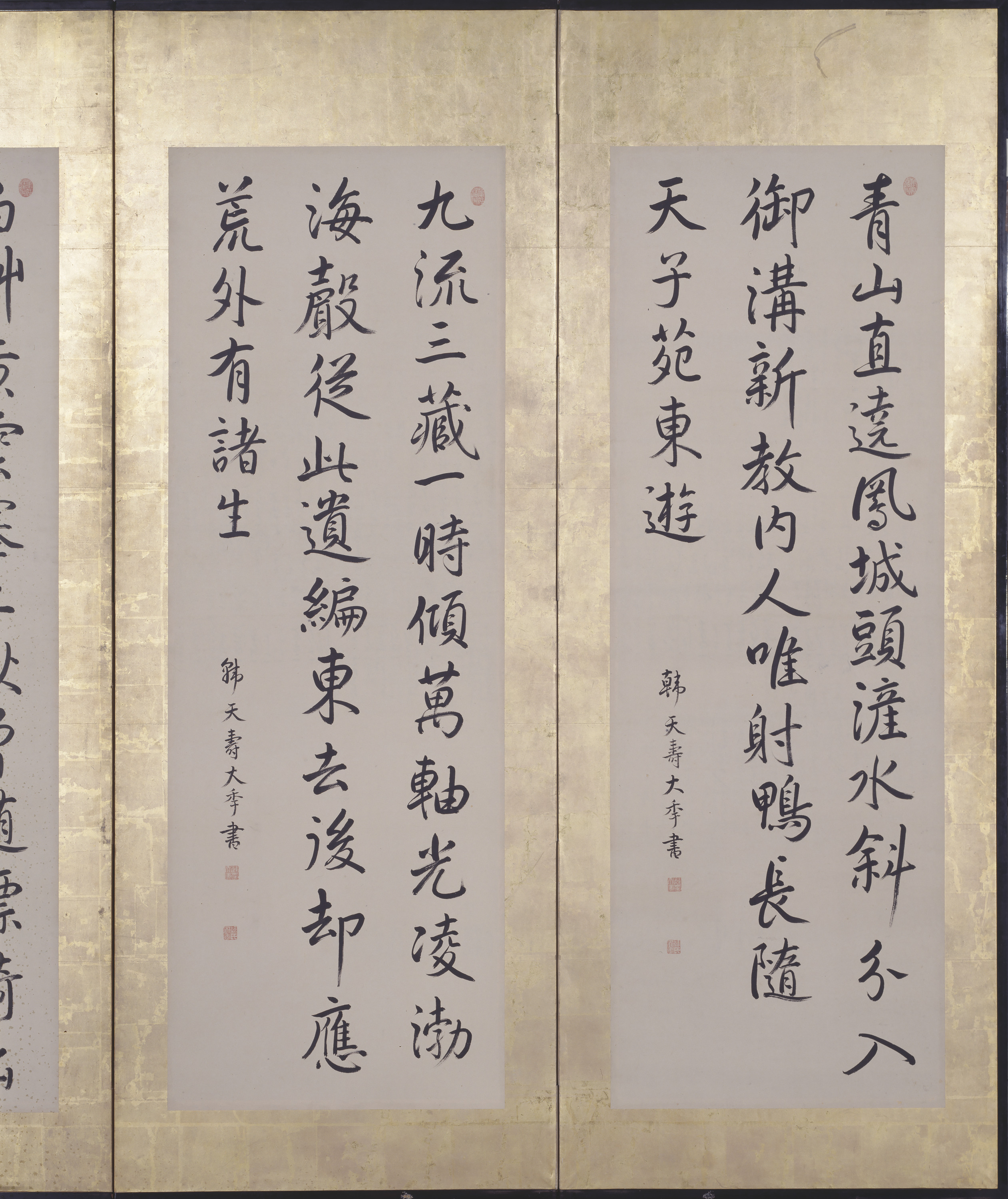
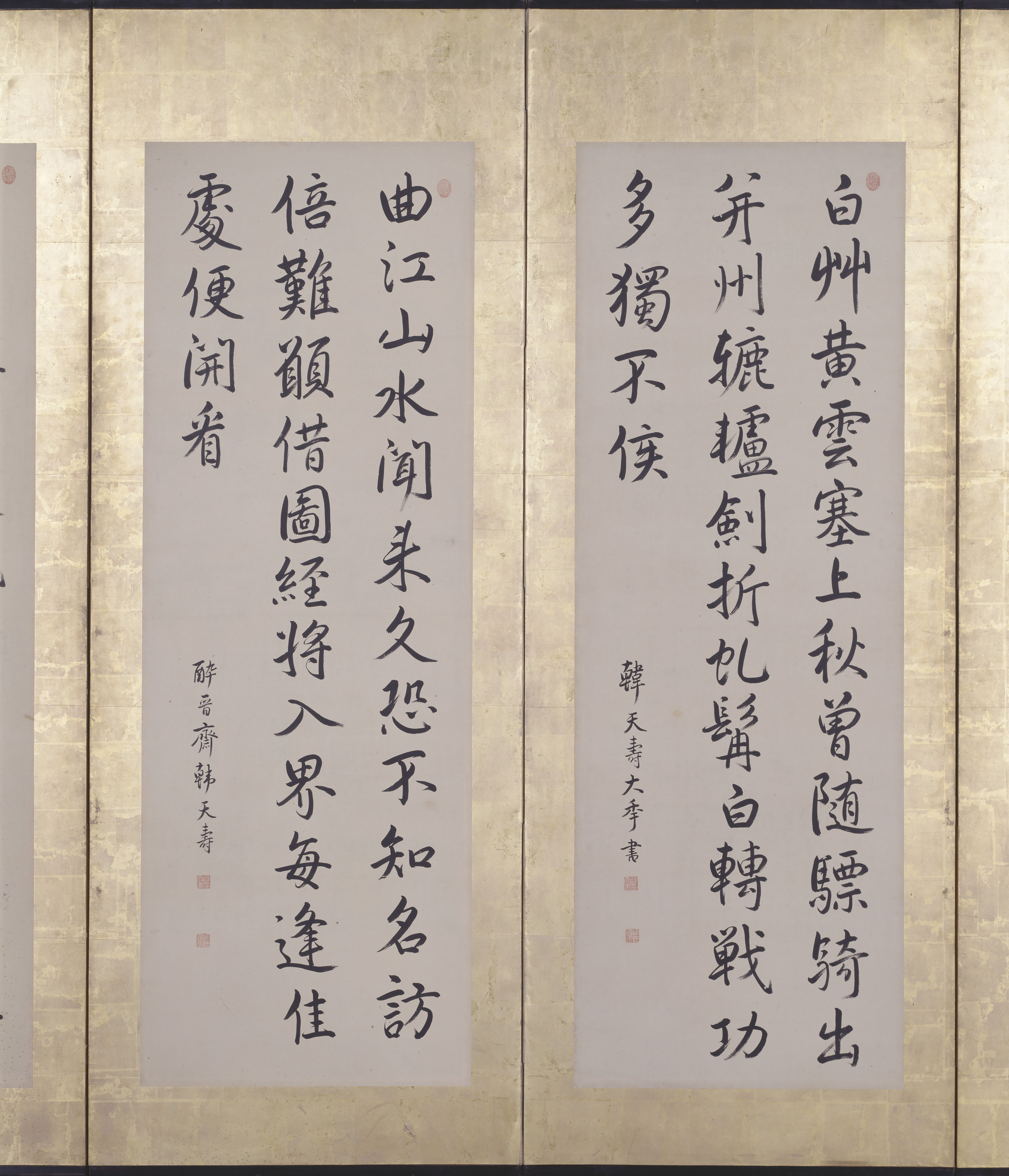
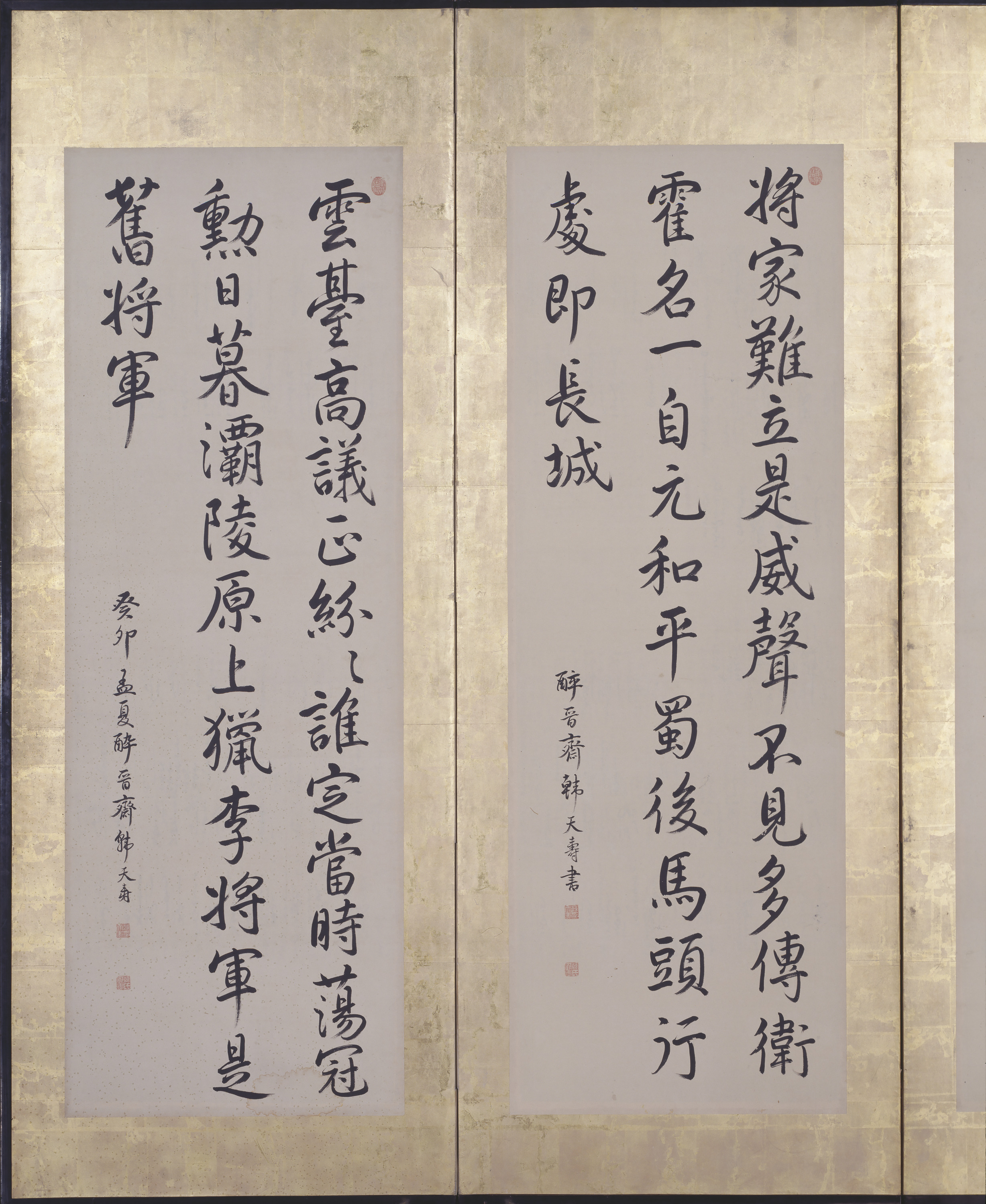



Kan Tenju, a native of Ise Matsusaka (present-day Mie Prefecture) generally known as Nakagawa Chôshirô, was a calligraphic artist (J., shoga ka) of the mid-Edo period (1615-1868). His sobriquet was Tainen and artist name was Suishinsai. He also used the name Kan Tenju, claiming himself a descendant of Yeo Jangwang (J., Yo Shôô) from Korea. He first studied the calligraphic style of Wen Zhengmig under Kazura Useki (1699-1779) and later mastered the styles of the Two Wangs (Wang Xizhi and Wang Xianzi). He was acquainted with Ike no Taiga (1723-76) and Kô Fuyô (1722-84), and the three climbed the mountains of Fuji, Asama and Hakusan together. He died in 1795 (Kansei 7) at the age of 69.
Japan-Edo